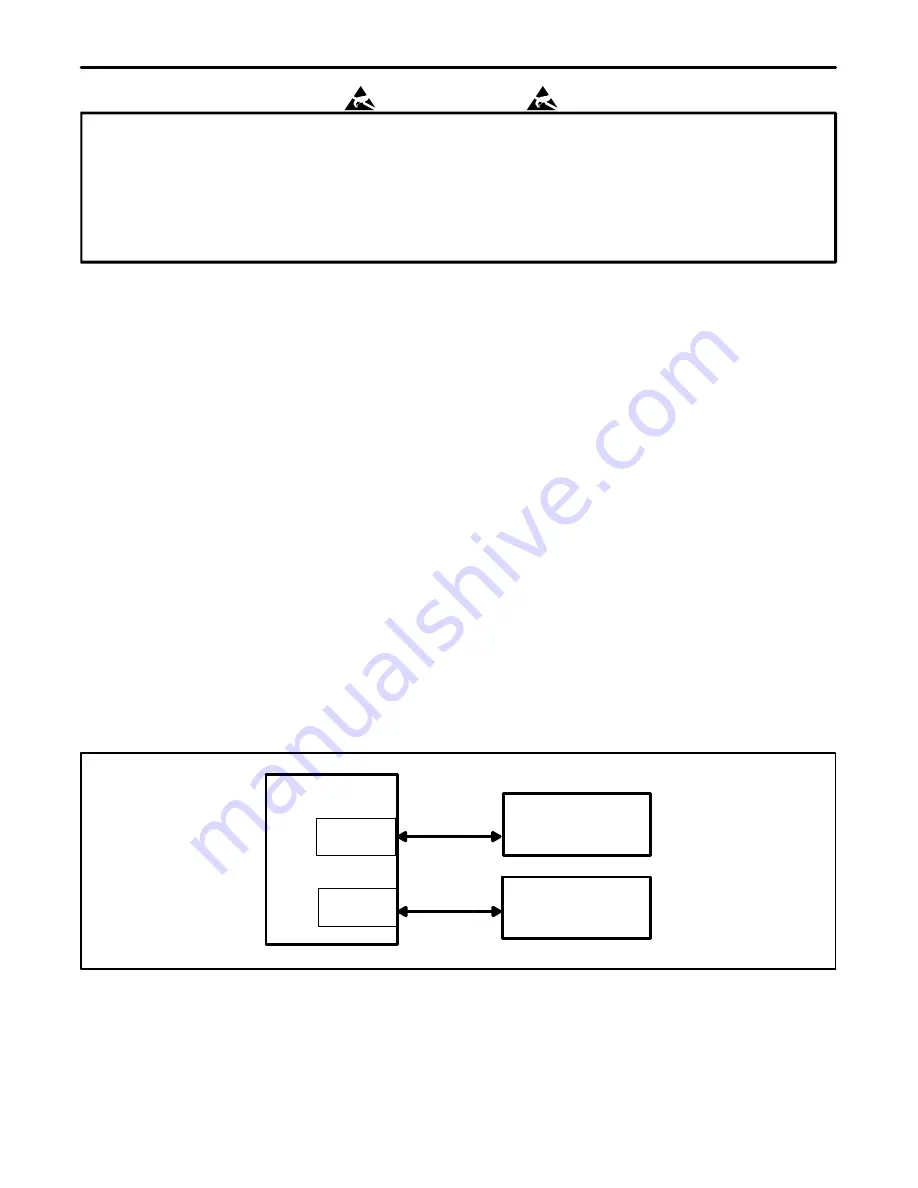
Section 360-880-202
4
STATIC-SENSITIVE
This equipment contains static-sensitive electronic devices. To prevent electrostatic charges from
damaging static-sensitive units:
Use approved static-preventive measures (such as static-conductive wrist straps and static-dissipa-
tive mats) at all times whenever touching units outside of their original, shipped, protective packaging.
Do not ship or store units near strong electrostatic, electromagnetic, or magnetic fields.
Always use the original static-protective packaging for shipping or storage. Return a tested unit to its
original protective packaging for storage.
3.
APPLICATION GUIDELINES
The ST1U is used only in the 360-80 ICB. Using the 3608-80 ST1U in any other Charles product will cause im-
proper operation and could damage the equipment.
Note:
When using HDSL modules for T1 transport, you may experience some problems with communication
using the T1 facility data link (embedded operations channel) due to the T1 to DSL conversion/synchro-
nization process.
3.1
Dual T1 Mode Applications
3.1.1. Independent Dual T1 Application
The Dual T1 mode allows the T1 of the T1-S and the T1 of the ST1U to be connected to two different 360-80
ICBs. These two T1s run independently of each other and allow the 360-80 system to provide up to 1.5 Mbps to
each T1 for a total of over 3 Mbps of bandwidth. See Figure 2 for a typical configuration.
In this configuration there are two different possible timing scenarios:
1. The 360-80 (A) in internal/external timing with the 360-80 (B) and the 360-80 (C) in loop timing.
2. Both the 360-80 (B) and the 360-80 (C) in internal/external timing with the 360-80 (A) in loop timing.
For network management of multiple 360-80s over the T1 links, connecting the management LAN to the 360-80
(B) will provide the capability to manage the 360-80 (A) and 360-80 (C) systems. Similarly, management connect-
ing the management LAN to the 360-80 (A) will provide the capability to manage the 360-80 (B) and 360-80 (C)
systems. However, when connecting the management LAN to the 360-80 (C) only 360-80 (C) can be managed.
Primary
360-80 (A)
360-80 (B)
360-80 (C)
T1-S
ST1U
T1
Secondary
T1
Figure 2. Independent Dual T1 Application
3.1.2. Combined Dual T1 Application
The dual T1 mode allows over 3 Mbps of data to be transported between two 360-80 systems over two T1s (be-
cause of physical constraints, a 64xN or router unit would be required to use the complete bandwidth). See


















